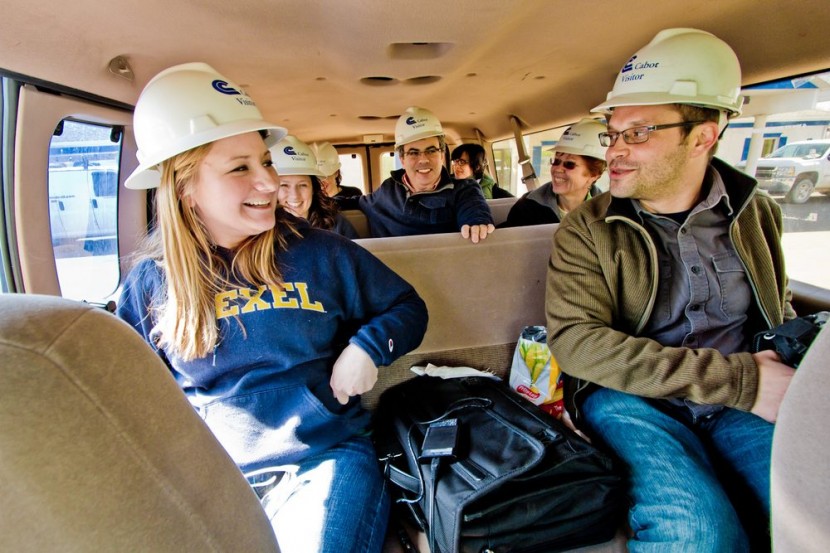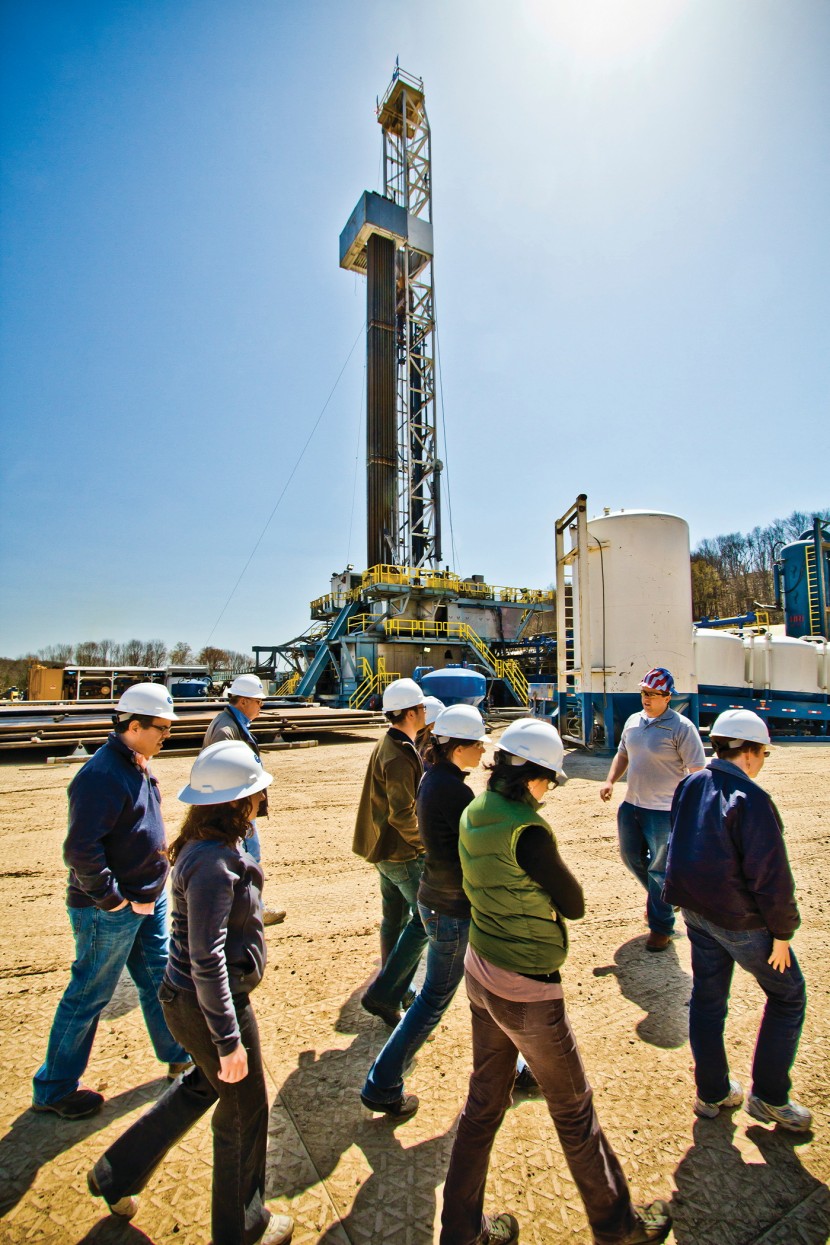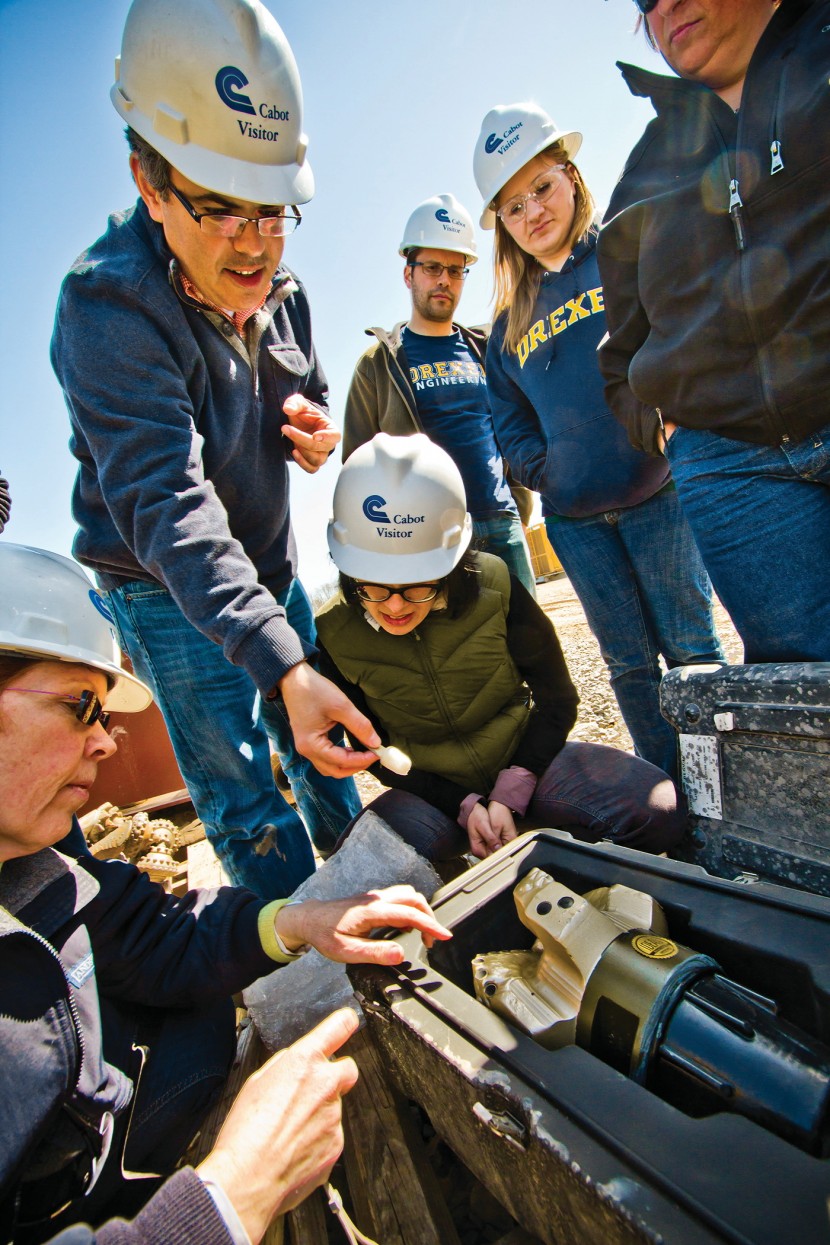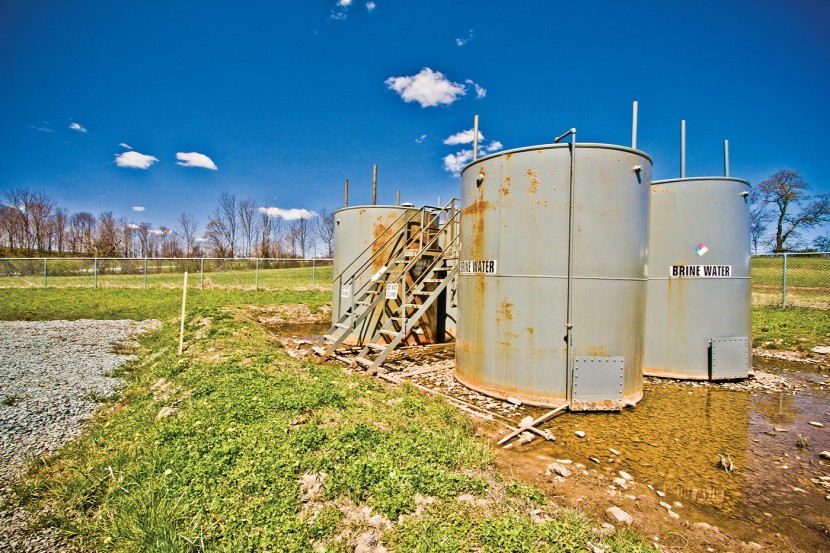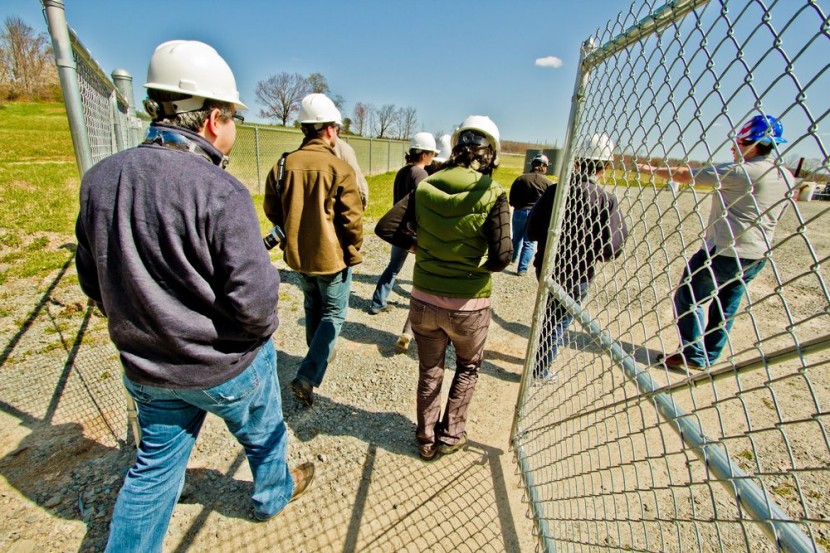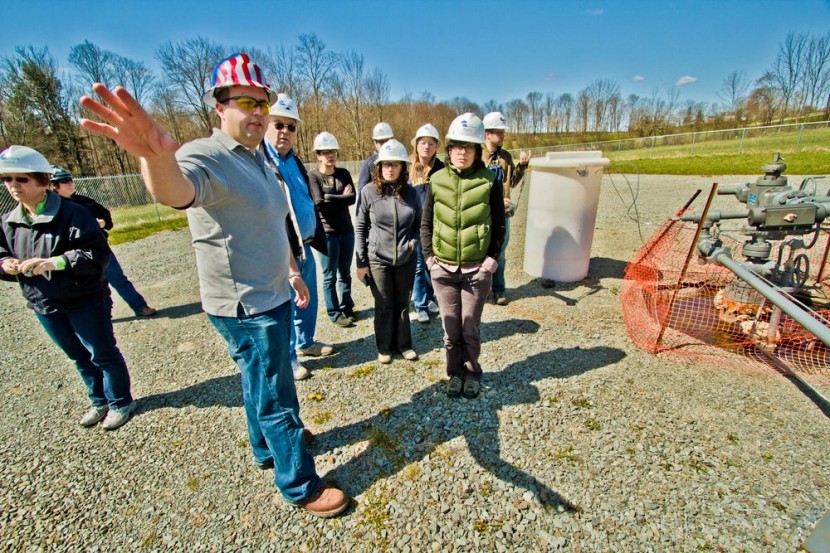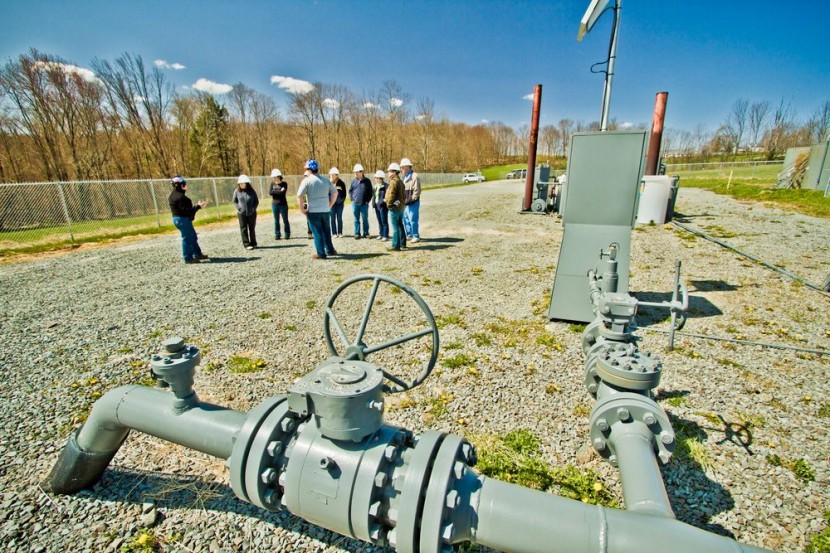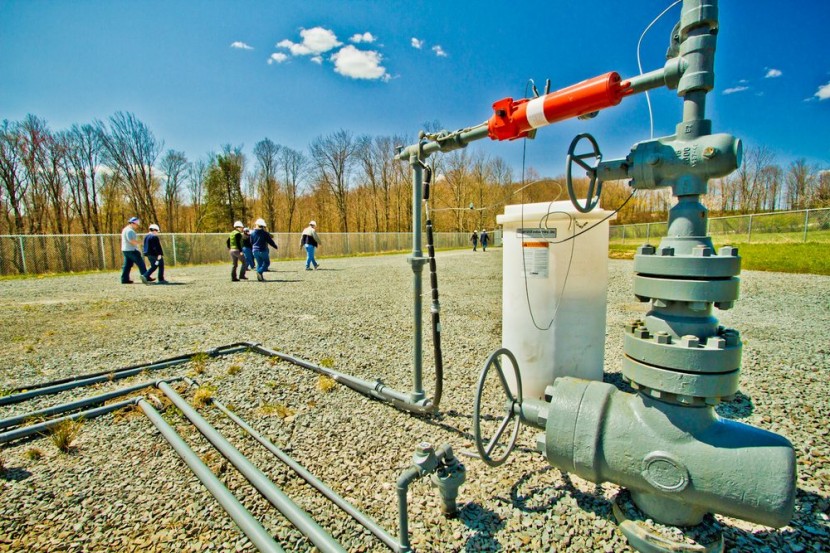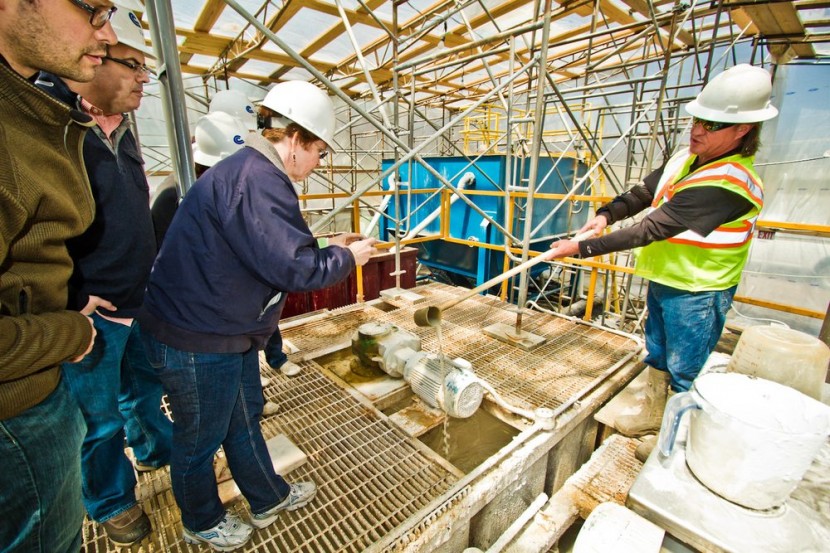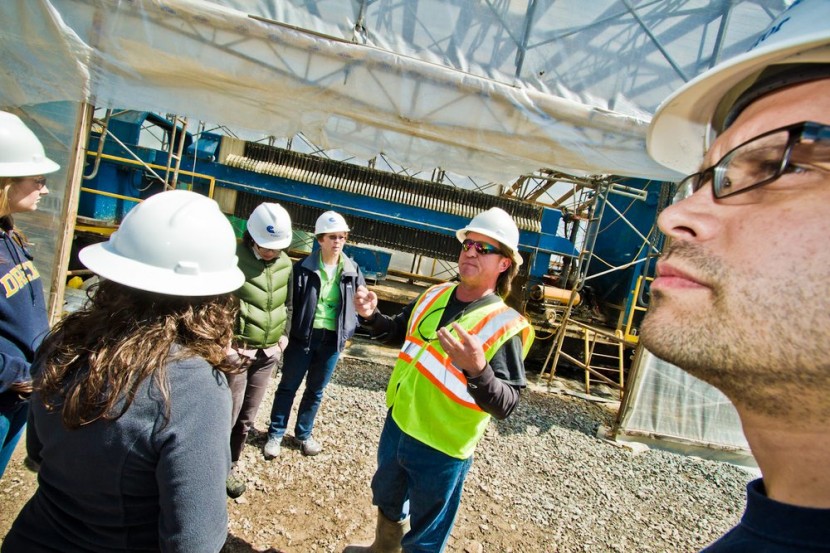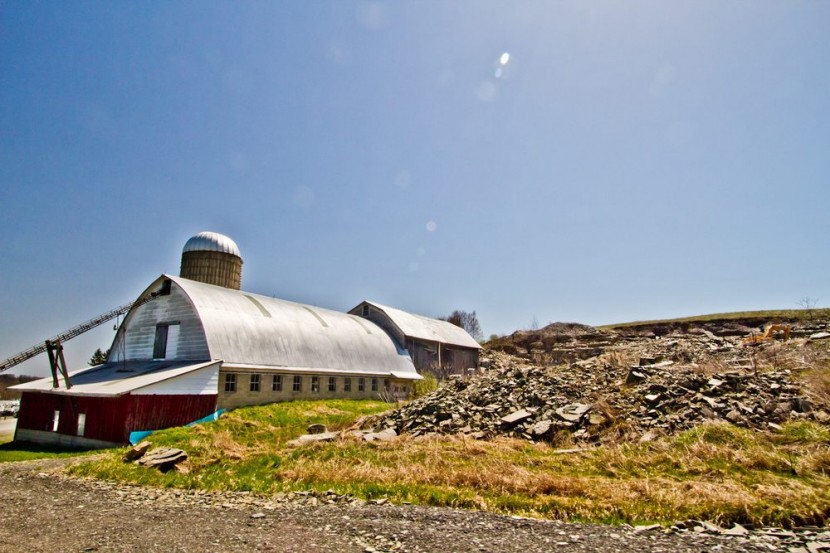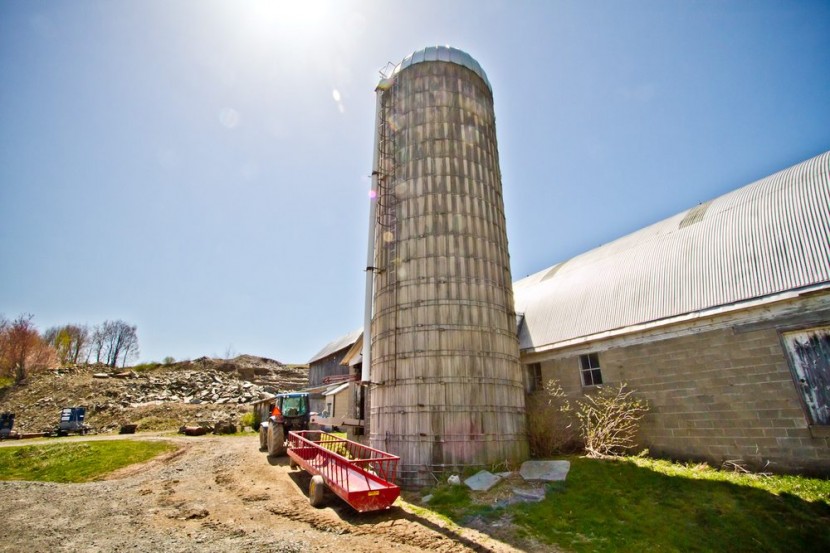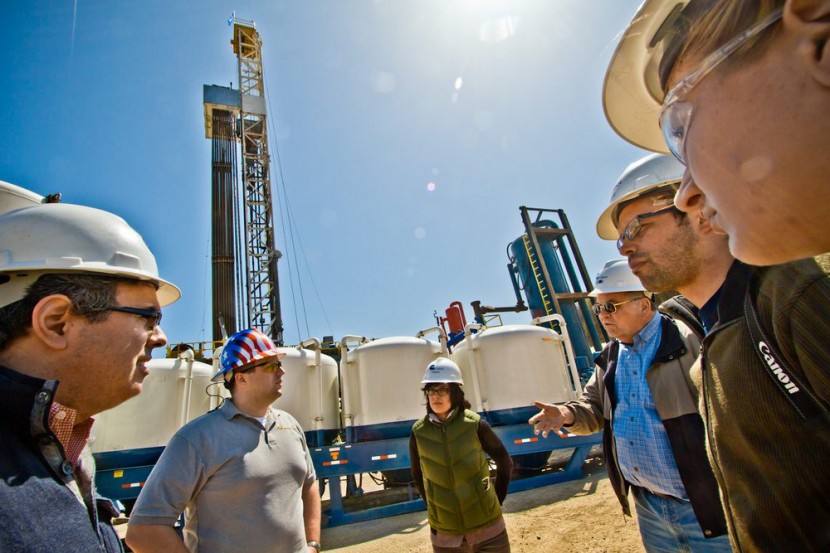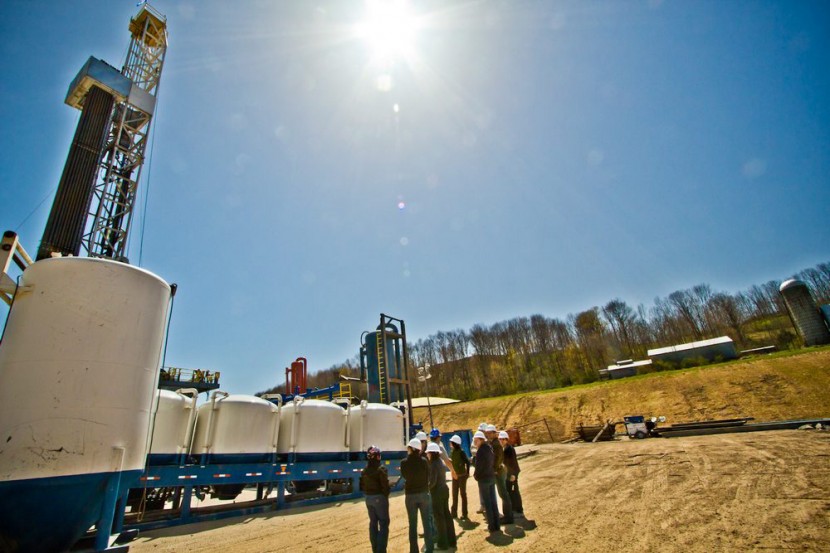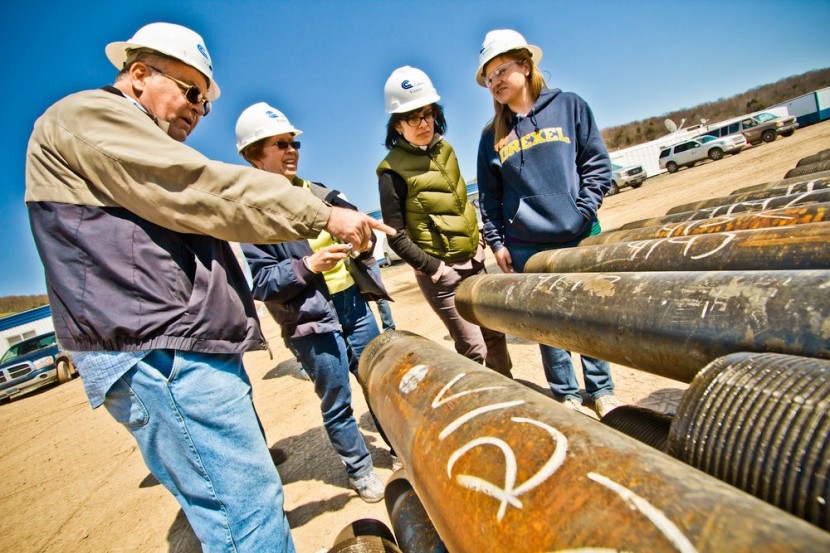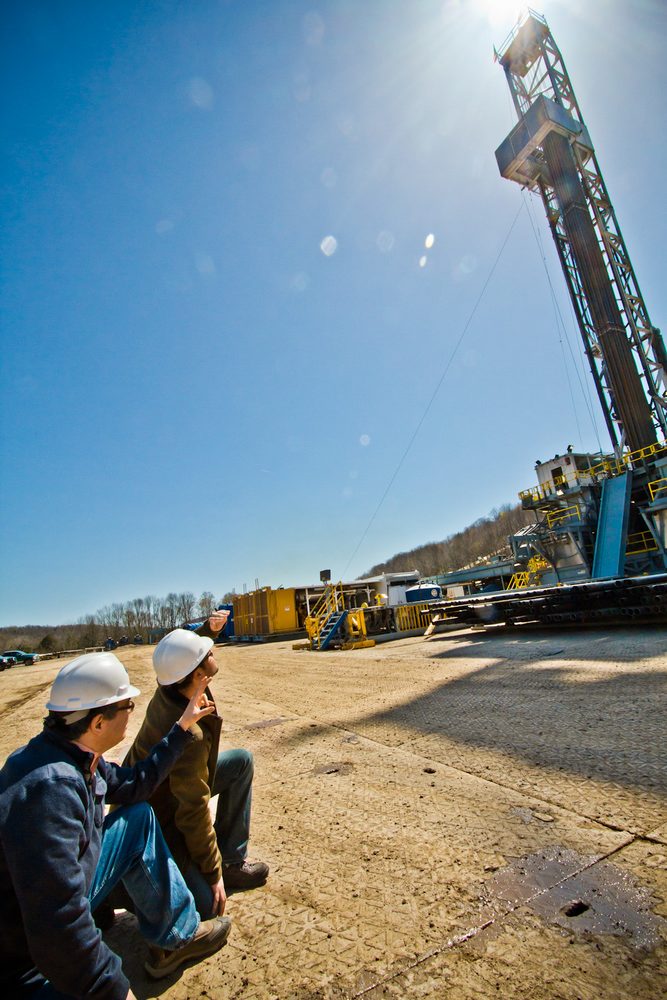The rock that lies more than a mile beneath much of Pennsylvania’s isolated and idyllic countryside has been thrust to the forefront of national debate. And for good reason: Some scientists have said that drilling the Marcellus Shale, a rock formation densely permeated with natural gas, could spur Pennsylvania’s very own gold rush.
“The Marcellus Shale is not just a little gas cap here or there,” says Joseph Martin, a professor in Drexel’s College of Engineering’s civil, architectural and environmental engineering department who has observed Marcellus drilling sites first-hand, most recently at a site in Washington county on the western side of the state. “This rock underlies the entire Allegheny Plateau—probably 50 to 70 percent of Pennsylvania. So when they say Pennsylvania could be the Saudi Arabia of natural gas, they’re not exaggerating.”
That amount of fuel could provide numerous benefits to the region: a local source of energy, jobs in everything from production to surveillance and royalties for landowners in areas from which gas is procured. There are environmental benefits, too. Natural gas produces only 40 percent as much carbon dioxide and other greenhouse gases as coal, Martin says, and it can be burned to generate electricity, or compressed and liquefied for use in construction.

A group of Drexel students, faculty and alumni traveled to a Marcellus Shale drilling site in mid-April to learn more about the drilling process.
“Here in the state, there are 12 million people, and there are somewhere around 6 million occupied buildings,” Martin says. “Every one of them has a combustor in the basement. If we replace all the coal burning with natural gas, all of our targets would be met.”
So why do so many citizens, environmental activists, politicians and journals have so many qualms over what seems to be, on the surface, an environmental and economic panacea?
Well, the answer is simple: The procurement process for getting that natural gas out of the shale is so young that researchers and regulators haven’t been able to catch up to the drilling that is already underway—and important questions about the safety of the process remain unanswered.

The drill is typically situated on a six-acre, aboveground pad, which sits in the center of a mile-wide area. There are currently more than 3,000 sites.
HYDRAULIC_FRACKING
The process of producing fractures in a rock formation that stimulate the flow of natural gas or oil, increasing the volumes that can be recovered. Fractures are created by pumping large quantities of fluids at high pressure down a wellbore and into the target rock formation. (Source: EPA)
Because of the potentially adverse effects shale drilling could have on the region’s drinking water, air land and infrastructure if not done properly, scientists and lawyers at Drexel and beyond are scrambling to ensure that drilling the nearly 3,000 sites already in place—and obtaining new, cleaner energy in the process—will not come at the cost of local communities and their environments.
Innovation In Drilling
A typical Marcellus drilling site covers nearly a mile, topped with a six-acre, aboveground pad station where the drill is situated. To prepare a site, the surrounded land must be graded, retention ponds for the “fracking water” must be built and often-smallish country roads must be fortified to accommodate the influx of heavy equipment being transported.

Drexel researchers working across several fields say that many important questions about Marcellus Shale drilling remain unanswered.
“At this point in the process, it’s just standard civil engineering,” Martin says.
Even the next two steps in the process—directional drilling and hydraulic fracking, also known as “hydrofracking” or simply “fracking”—are techniques that have been in use for a few decades. The innovation in drilling the Marcellus Shale is the combining of the two techniques, with the intent of first releasing and then capturing the natural gas, Martin says.
Directional drilling is the process of drilling a mile into the ground while slowly angling the rig to eventually bore a tunnel a mile horizontally, creating a series of eight to 10 wells. In intervals, explosives are inserted to open the area for hydrofracking.

According to some estimates, the Marcellus Shale holds enough natural gas to serve the entire United States for the next 20 years.
“They’re spreading the drill through layers of shale,” Martin says. “It’s like drilling through the center of a horizontal piece of plywood.”
Next, specialty firms such as Halliburton come onto the site to inject as many as 4 million gallons of water mixture at an extremely high pressure. The mixture generally consists of fresh water, sand and chemicals that act as viscosity reducers, allowing the natural gas to escape and flow efficiently into the recovery wells.
“The high-pressure water is what fractures the sand,” Martin says. “It’s like the sand holds the door open, and the chemicals keep the door propped like a door stop to keep the gas flowing into the wells.”

Each well is lined with five casing strings that gradually get smaller as they get closer the shale. Each string is fully cemented to the surface with more than 3 million pounds of steel and cement, ensuring the gas does not leak and remains securely in the well.
“The most important innovation that’s happened was the creation of the electronics to monitor where the gas is,” Martin says. “The development of sensors and software to measure microseismic events has made accessing these incredible resources possible.”
Martin estimates the reserves of natural gas that lie within the Marcellus Shale, which was named for the small town of Marcellus, N.Y., where the shale is exposed above ground, could last as long as 60 years.
“The Marcellus Shale is the easiest one to drill,” Martin added. “Should they keep drilling, they’ll have these pads and infrastructure, and in 20 years when wells begin to deplete, we’ll have the resources already in place to go back and drill the Utica and Upper Devonian shale formations. If we continue to develop technology, it could be even easier. And I happen to work for Drexel University in the College of Engineering, and we will find the technology. This is revolutionary.”

Saltwater & Earthquakes
The natural gas trapped in the Marcellus Shale is the result of sea animals decaying from a period when the stretch of land was underwater. As it turns out, the shale was an inlet sea that was eventually closed off and isolated, says David Velinsky, the director of the environmental biogeochemistry section of the Patrick Center for Environmental Research, a department within the Academy of Natural Sciences of Drexel University.
As a result, Velinsky says, the Marcellus Shale that formed is incredibly dense with salt—and that’s part of the problem.
“When you put the fracking water down there and it interacts with the shale, the water comes back up with a concentration of salt [that is considerably higher than that of] sea water,” Velinsky says, adding that the salinity of fracking flowback water is nearly 80 parts per thousand—more than double the typical 35 parts per thousand of ocean water.

Of the 4 million gallons of water used to hydrofrack at a given site, typically at least 3 million gallons is ejected from the ground, Martin says. Essentially, this leftover brine, known as “flowback,” is a waste product.
In areas of Texas and Ohio, drillers have been able to inject the flowback water into two-mile deep aquifers.
“That geologic situation is not available in Pennsylvania, though,” Martin says. “There aren’t any empty sandstorm layers underground for them to inject it in.”
Currently, Pennsylvania drillers reuse the flowback water to hydrofrack other local sites, then eventually ship the unusable flowback to be injected in out-of-state aquifers—a solution that has already proven to be somewhat unreliable, if not downright dangerous.
On December 31, 2011, a minor earthquake—it actually registered a 4.0 on the Richter scale—rattled the small city of Youngstown, Ohio. Some scientists believe the seismic activity was induced by the high concentration of flowback disposal aquifers in the area, Martin says.
“If they had to, they could simply evaporate it,” Martin says. “That would just give you salt, which would be a solid waste you could take to a landfill. That’s a solution—but it’s an expensive one.”
Velinsky says companies such as General Electric have experimented with portable, tractor trailer-sized treating devices and reverse osmosis but added that such solutions are both pricey and energy intensive. It’s easier, if not safer, to stick with the established techniques.
“The salts themselves are very difficult to treat,” Velinksy says. “When you have this water that is basically a pond of salt, the only other way to deal with it other than evaporation would be to dilute it down, adding more water.”
While a waste management system that is both inexpensive and environmentally friendly has yet to be developed in Pennsylvania, some scientists like Charles Haas, the College of Engineering’s civil, architectural and environmental engineering department head, say drillers have more to worry about than the salt in the fracking fluids.
A lot more, actually.
Contamination Concerns
“One of the misconceptions is that the water produced after drilling is just salty,” Haas says. “In addition to the high concentration of salt, it has a number of other inorganic elements to it—some radioactivity, and some residuals from the original fracking fluid itself.”
Haas says the chemicals used during fracking vary from firm to firm and depend on the particular site’s geology and chemical makeup. Currently, companies’ fracking fluids are protected by law as a trade secret, and therefore, the firms are not required to disclose their formulas.
“There have been lists put out there—a variety of organic compounds, hydrocarbons, various solvents—but that’s part of the controversy,” Haas says. “The level of monitoring is very poor.”
In Pavillion, Wyo., the Environmental Protection Agency sampled water from nearly 20 of the town’s 80 wells after residents reported high levels of water pollutants, alleging their water turned black and smelled like gasoline. The EPA detected high levels of several petroleum hydrocarbons, including benzene and methane, though it was uncertain as to whether those found in the groundwater had the potential to migrate to drinking water aquifers.
Though the report was uncertain as to whether hydrofracking was the cause for the appearance of these compounds, some Pennsylvanians fear their water could also be at risk of contamination if Marcellus continues to be drilled.
“If the well is not adequately constructed and adequately drilled, you can get a cross connection between the well pipe going into the gas field and the drinking water aquifers that lie above it,” Haas says. “So you can get contamination between the drill fluid, the fracking water that’s used, the gas that’s being released and the individual aquifers.”
“At this point, we really just don’t know,” Haas added. “All we have is some anecdotal information.”
Some scientists are stepping up to back these anecdotes with data.
In July 2010, Velinsky and his Patrick Center colleagues studied nine headwater streams surrounding or within Susquehanna County, focusing specifically on comparing surface water.
“We saw all the discussion about Marcellus happening, [and] the staff and scientists came together and decided we needed to study this,” Velinsky says. “This is too big to ignore. This isn’t a one-time thing like the BP oil spill. This is something that could potentially impact Pennsylvania for a long time.”
The research team compared sites that were similar in watershed and physical stream characteristics, but differed in the density of natural gas wells in their region.
“We want to be able to give regulators a threshold of well density in a given area,” Velinsky says. “We’re trying to figure out what is a reasonable amount of drilling in a watershed before you start to see an impact.”
The Academy report showed there was a significant correlation between increases in natural gas well density with decreases in water quality indicators, such as the types and number of macroinvertebrates, algae, rocks and salamanders, despite the small sample sizes.
“Though the study was preliminary, it was enough to say, ‘OK. We should probably do a bigger study,’” Velinsky says.
“This is a moving target,” Velinsky says. “There might have been five wells in a given area last year, but there may be 12 this year. We’ll see what the differences are. For areas like the Delaware River Basin, one of two water sources for Philadelphia, where there isn’t any significant drilling yet, we’ll be analyzing background samples chemistry-wise, so that when drilling does start up, we’ll have something to compare it to.”
Air emissions
Pete DeCarlo, an assistant professor in the department of civil, architectural and environmental engineering, says there’s yet another area in Marcellus research that is often overlooked as a potential environmental issue: air quality.
In fact, DeCarlo recently testified at a public hearing about air emissions from Marcellus operations, urging companies to acquire more data before increasing drilling activity.
“Without understanding the current baseline and monitoring that as drilling activity is increased, we’re not going to get the full picture of the Marcellus drilling impact,” DeCarlo says.
DeCarlo says the expected air pollutants from drilling activities in the Marcellus Shale include Particle Matter (PM), Oxides of Nitrogen (NOx) and Volatile Organic Compounds (VOCs), adding that the latter two can react with sunlight in the atmosphere to form ground-level Ozone, a pollutant that is damaging to both human and plant health.
VOCs—which include methane, the key component of natural gas—are greenhouse gases that absorb infrared radiation, eventually “contributing to global climate change,” DeCarlo says.
“There are considerable uncertainties in the magnitude of fugitive emissions from wells and natural gas infrastructure, and this is an area of research and debate in the scientific arena,” DeCarlo testified at the Feb. 27 hearing. “Reduction of fugitive emissions of methane is a benefit to both natural gas extractors, as the loss of methane is a loss of revenue, and a benefit for the climate system.”
These pollutants can be emitted during various parts of the drilling operation.
“We know they exist, but the actual impact of those air emissions isn’t quite understood yet,” DeCarlo says.
He added that one of the main reasons for that uncertainty is because the monitoring systems in place weren’t designed with situations like Marcellus in mind.
“In general, air quality monitoring tends to be measured in urban areas, big cities,” DeCarlo says.
“Because Marcellus is so spread out, there aren’t a lot of monitors on a regional scale—and that’s a difficult thing to do.”
DeCarlo says some scientists are experimenting with nontraditional, low-cost monitoring systems, but added that those have tended not to be as accurate as the systems already in use.
Currently, Drexel does not take a position on the overall advantages or disadvantages of obtaining gas from the Marcellus Shale. DeCarlo says the role he and his colleagues play in contributing to the Marcellus Shale discussion is to help determine and make decisionmakers aware of drilling’s impacts.
“We encourage the efforts to perform the extraction, with the intent to minimize the impact on our air quality,” DeCarlo says. “[…] It’s for the policy makers to decide at what level that’s appropriate.”
The Great Unknowns
A lack of substantial data has proven to be an obstacle not only for scientists, but for environmental regulators, as well.
Alex Geisinger, a professor at the Earle Mack School of Law, launched a practicum called Hydrofracking and the Clean Water Act, enabling students to explore a variety of legal issues embedded in natural gas extraction. Geisinger says since environmental laws are generally structured by medium, a starting point for environmental lawyers is to consider the exposure pathways.
In the case of Marcellus, where ground, air and drinking water are intertwined, the pathway is not entirely clear.
The lack of data is coupled with the fact that fracking is exempt from most major environmental laws at the federal level, including the Resource Conservation Recovery Act and the Comprehensive Environmental Response, Compensation and Liability Act, known as Superfund, Geisinger says. One legal venue from which fracking is not entirely exempt, however, is the Clean Air Act. That’s because one of the main components of natural gas is benzene, which Geisinger says is a “relatively potent greenhouse gas.”
“Benzene is going to be released into the atmosphere when firms do exploratory drilling, and potentially when they do the actual drilling for production,” Geisinger says. “The EPA is hoping to control this process more at the federal level.”
Fracking may also be nonexempt from the Clean Water Act if the drilling pads prove to create runoff into streams and other surface water bodies that could ultimately find their way into the Chesapeake Bay, one of the most closely protected waters in the United States. Of course, the extent to which runoff occurs from the drilling sites remains unknown.
“If we find that there are sediment or other harmful materials present, they could eventually create serious problems,” Geisinger says. “But we just don’t know yet.”
That leaves the states to try to create a legislative framework, and without statistical proof the drilling process causes harm, the regulatory lines are blurred.
While some landowners fear regulatory action may not be able to catch up with damage that’s already under way, environmental lawyers are being careful not to act prematurely.
“There’s a concern within the legal community that we’re sort of letting things go as they’re happening without knowing what they’re going to cause,” Geisinger says.
Geisinger’s concerns are echoed by Haas, who says in addition to more active surveillance and mandates on companies’ financial resources to remediate damage caused along the way, drillers should be held accountable for restoring sites once their resources have been depleted.
“None of the sites have really finished their useful life yet,” Haas says. “But the environment needs to be restored after the site has closed. I think there’s an expectation that the drillers will be able to do that, but there’s no guarantee. We need an appropriate amount of compensation to the community for the diminishment of their surrounding environments.”
Geisinger says fracking companies do offer royalties to landowners whose properties are in some way affected by the drilling sites, and while they are appreciated among many beneficiaries, he added that some are claiming their property was undervalued and are filing claims to reassess what they are paid.
Still, experts such as Martin believe that in addition to providing relatively clean energy to Pennsylvania, drilling the Marcellus Shale could provide the financial relief that’s needed for families.
“Some people aren’t paying a bit of attention to the honest, hardworking people in the middle of the state, who would benefit from the royalties and jobs this drilling would bring,” Martin says. “There’s a lot of controversy surrounding this thing, but there’s not a lot of scientific basis for it. A lot of it is ideological. But in the meantime, we need to keep in mind, ‘How else are we going to find a green way to keep our houses warm?’”


